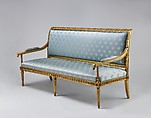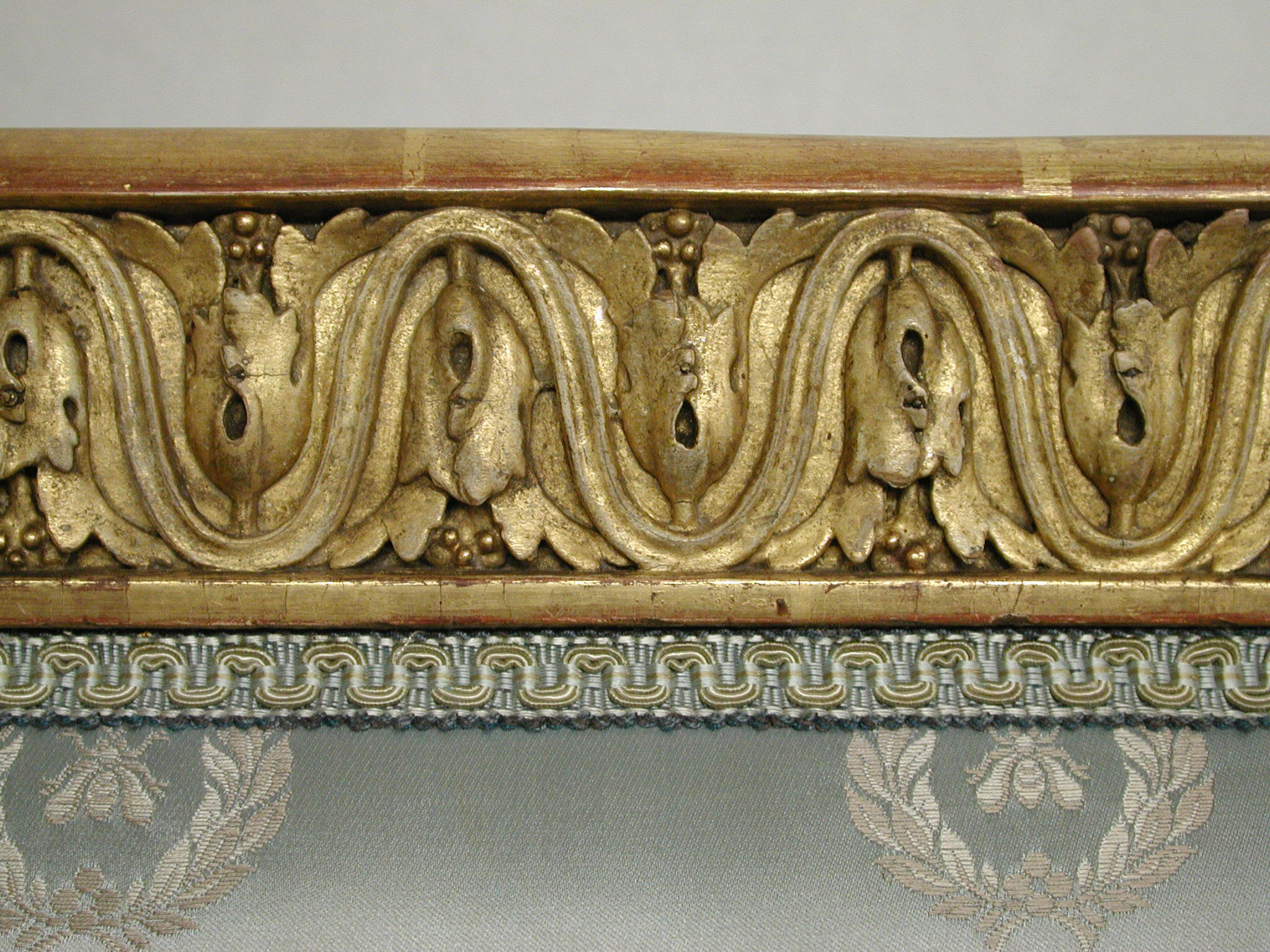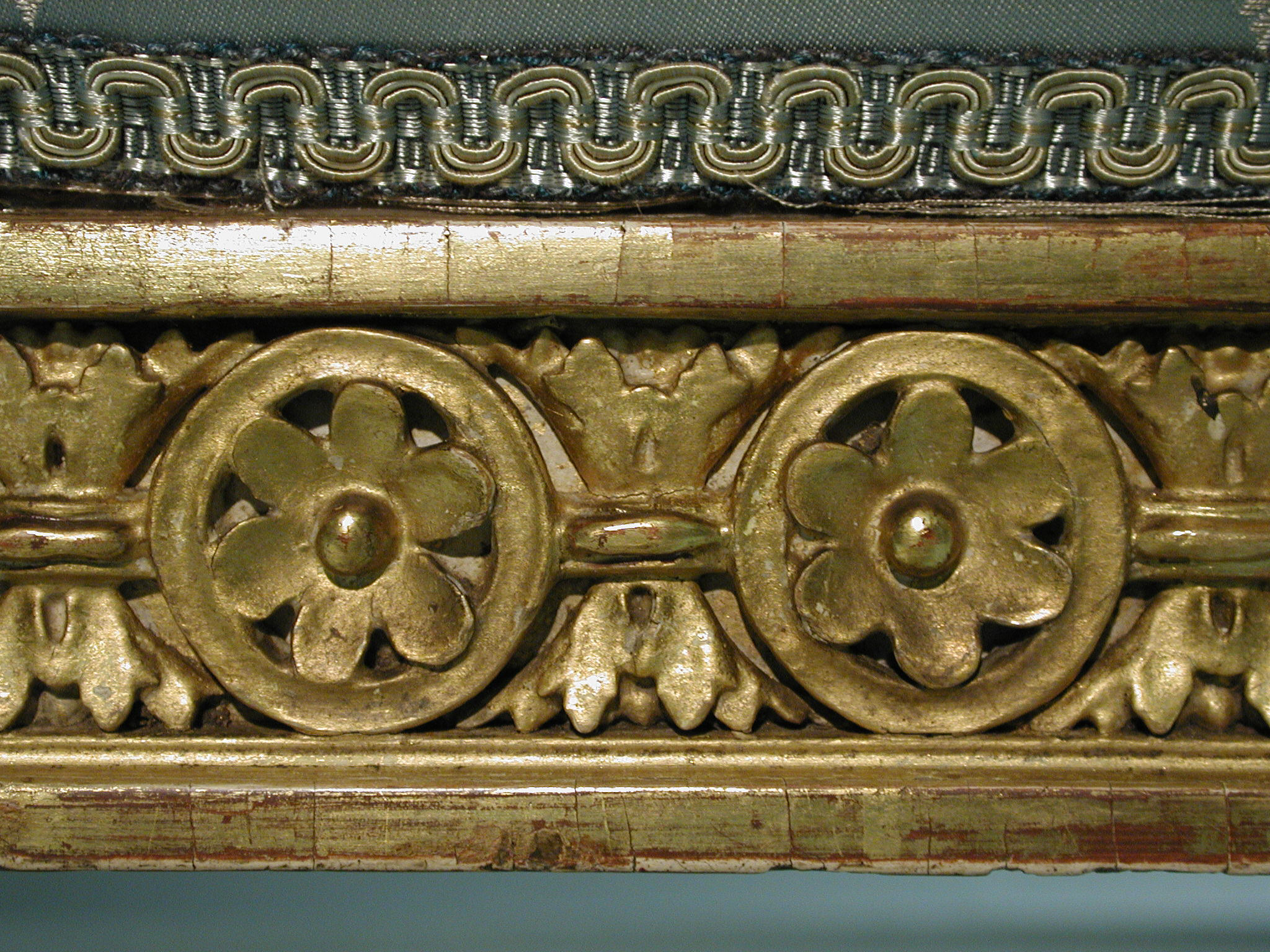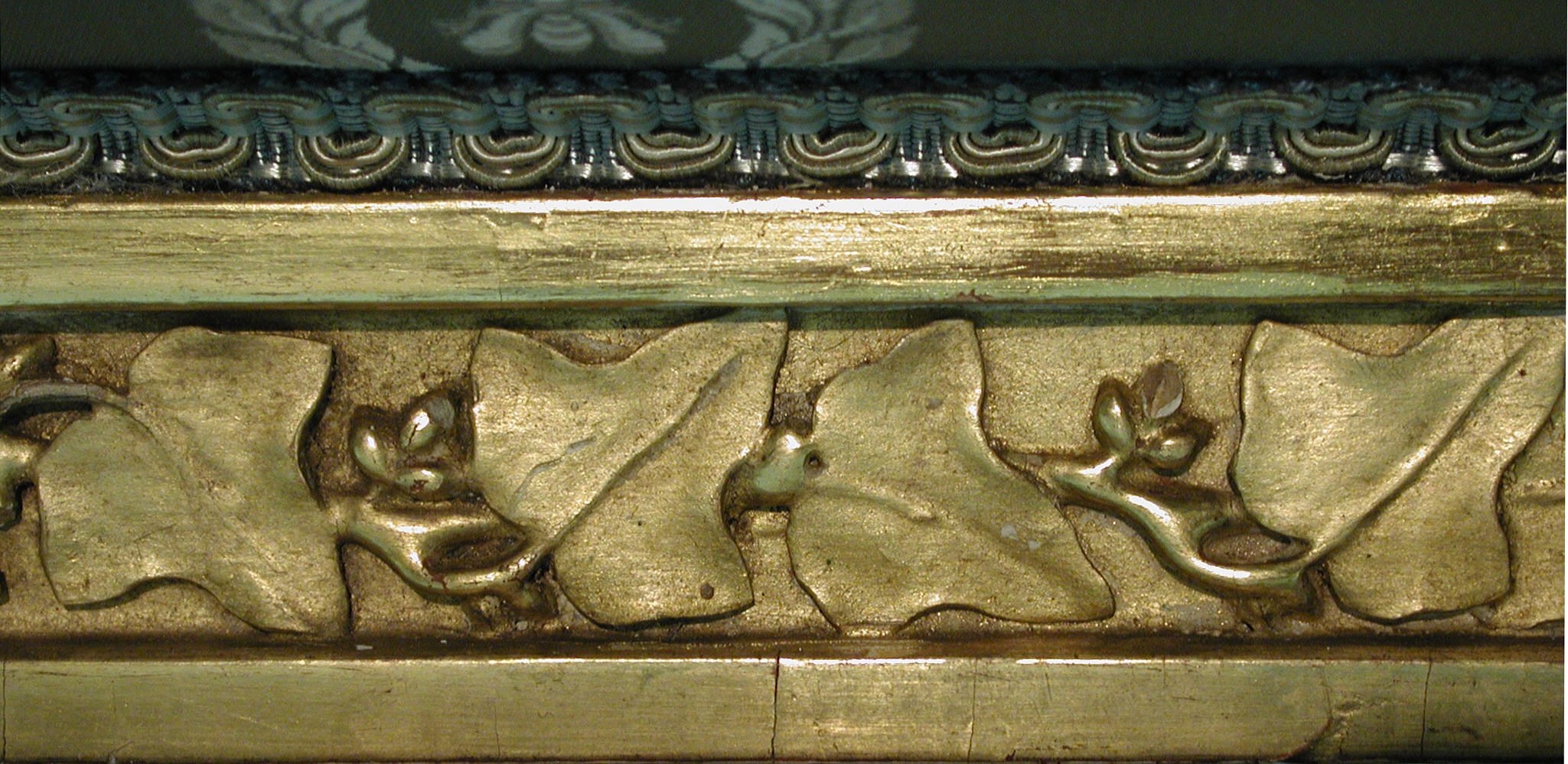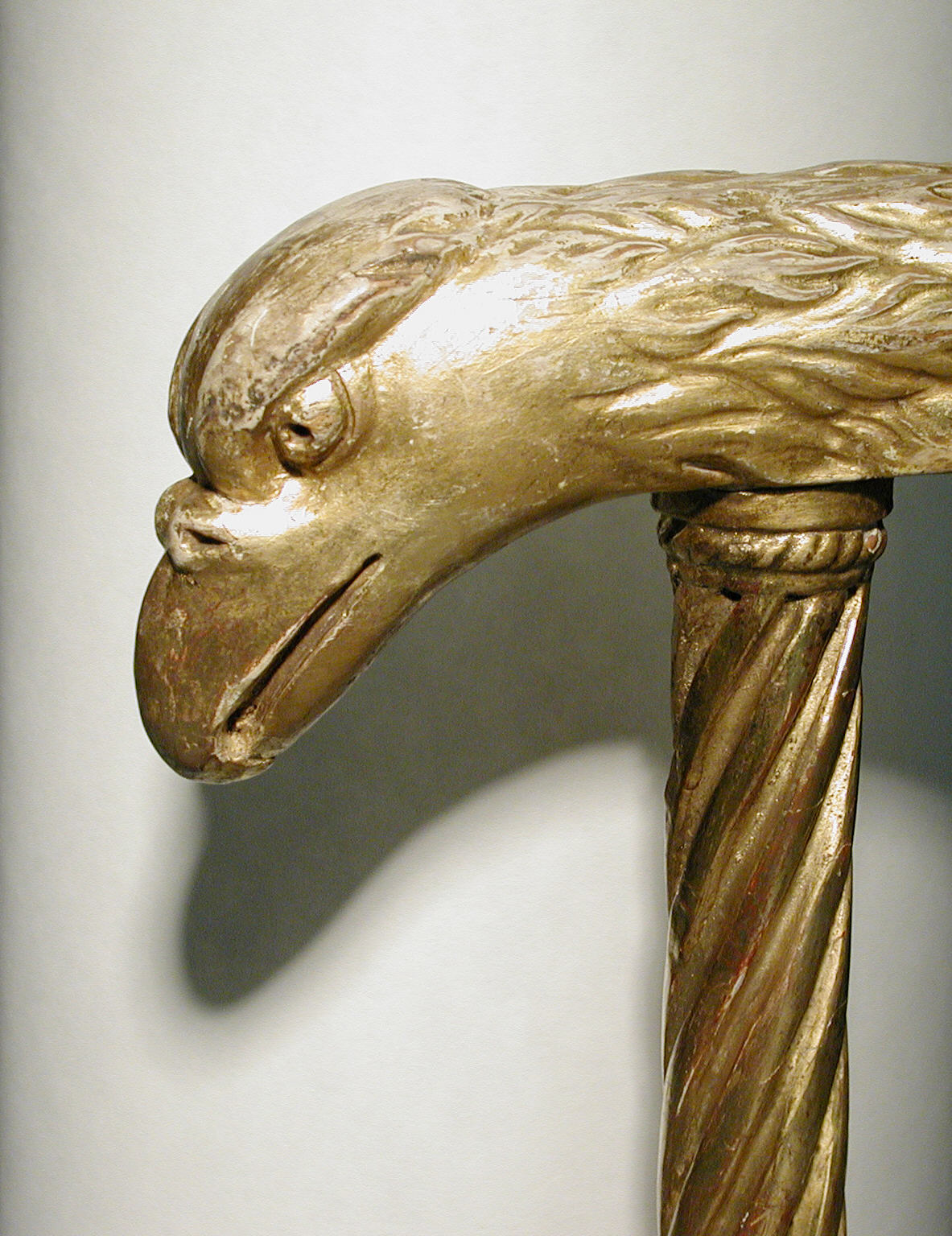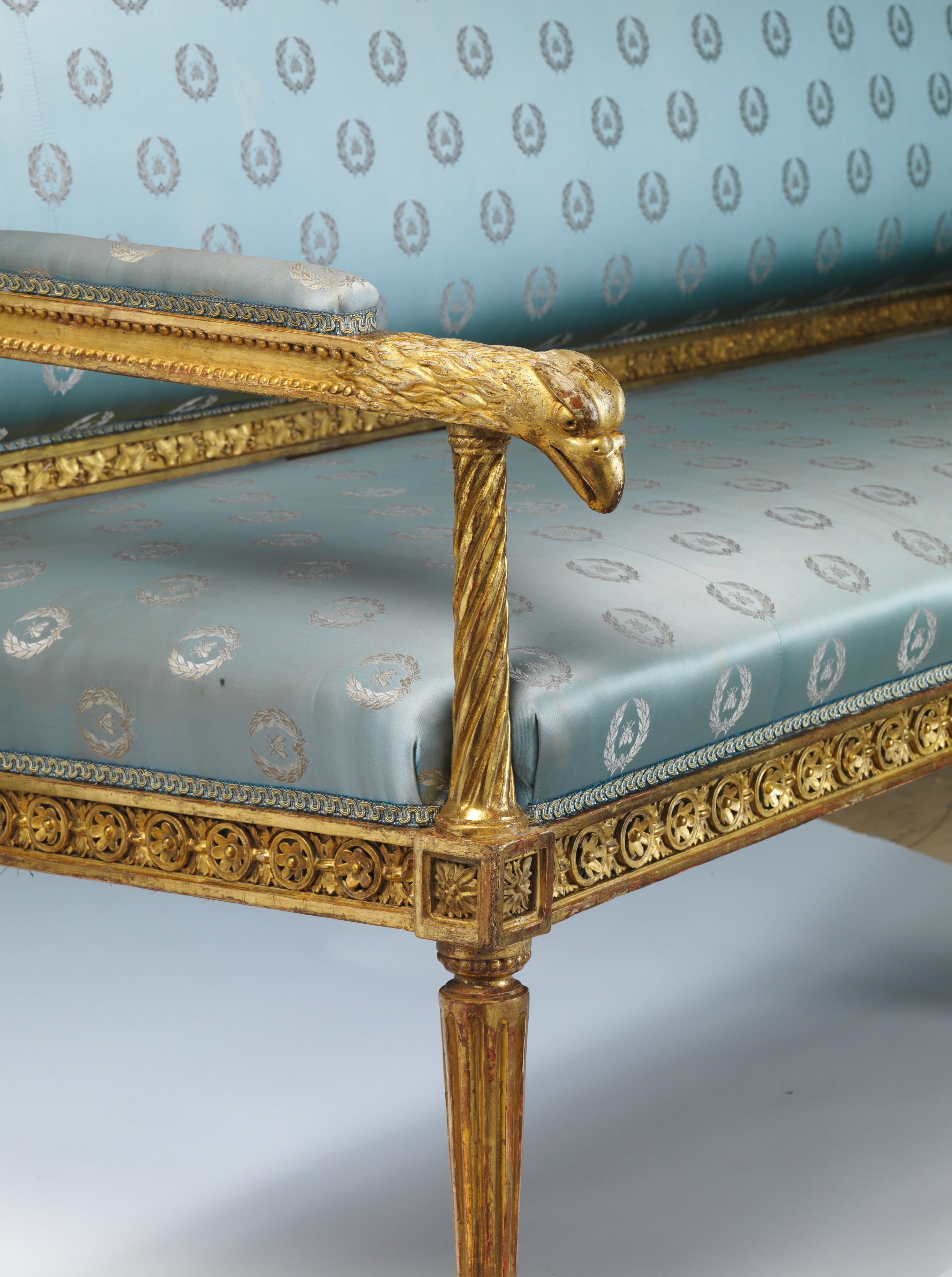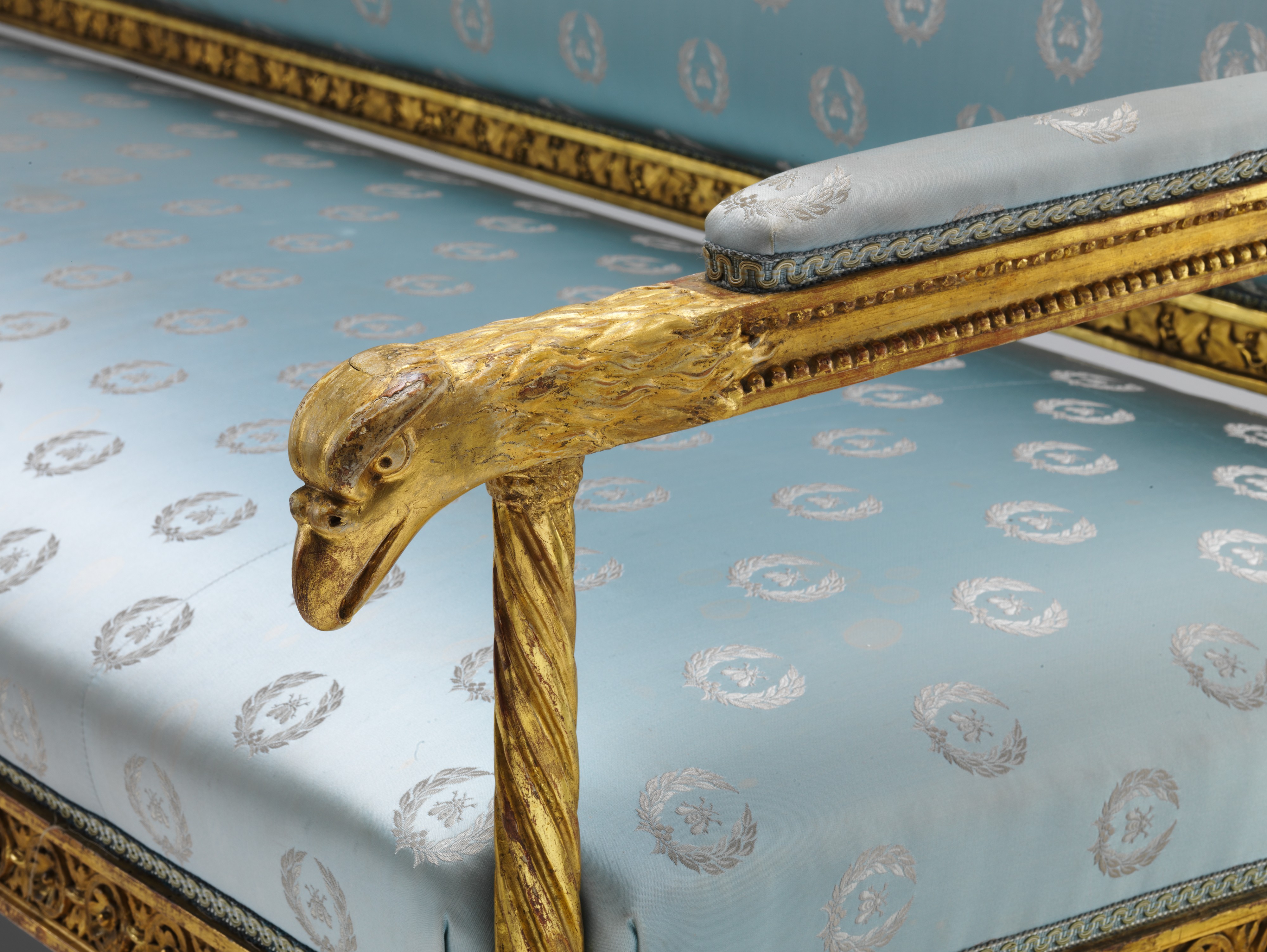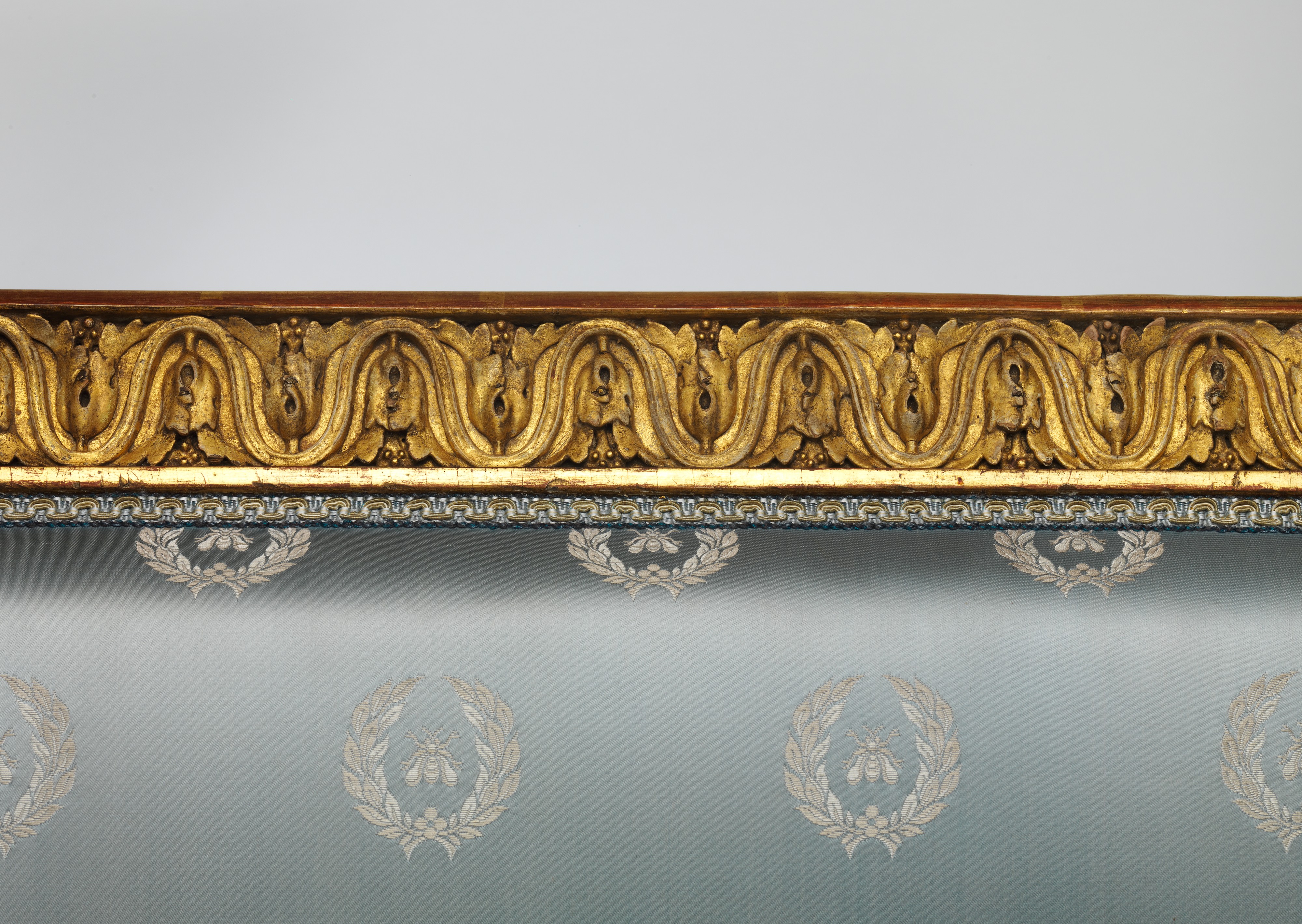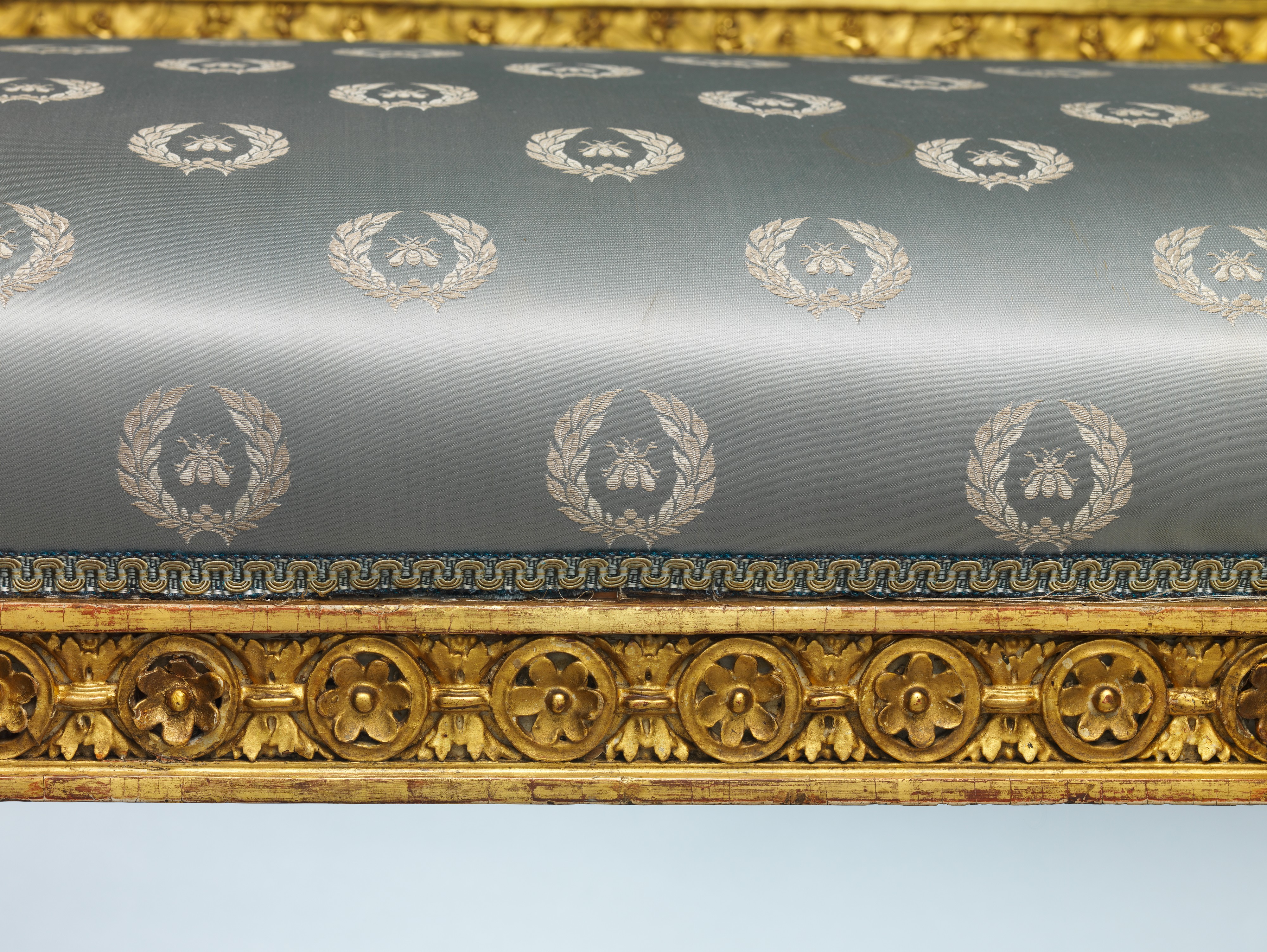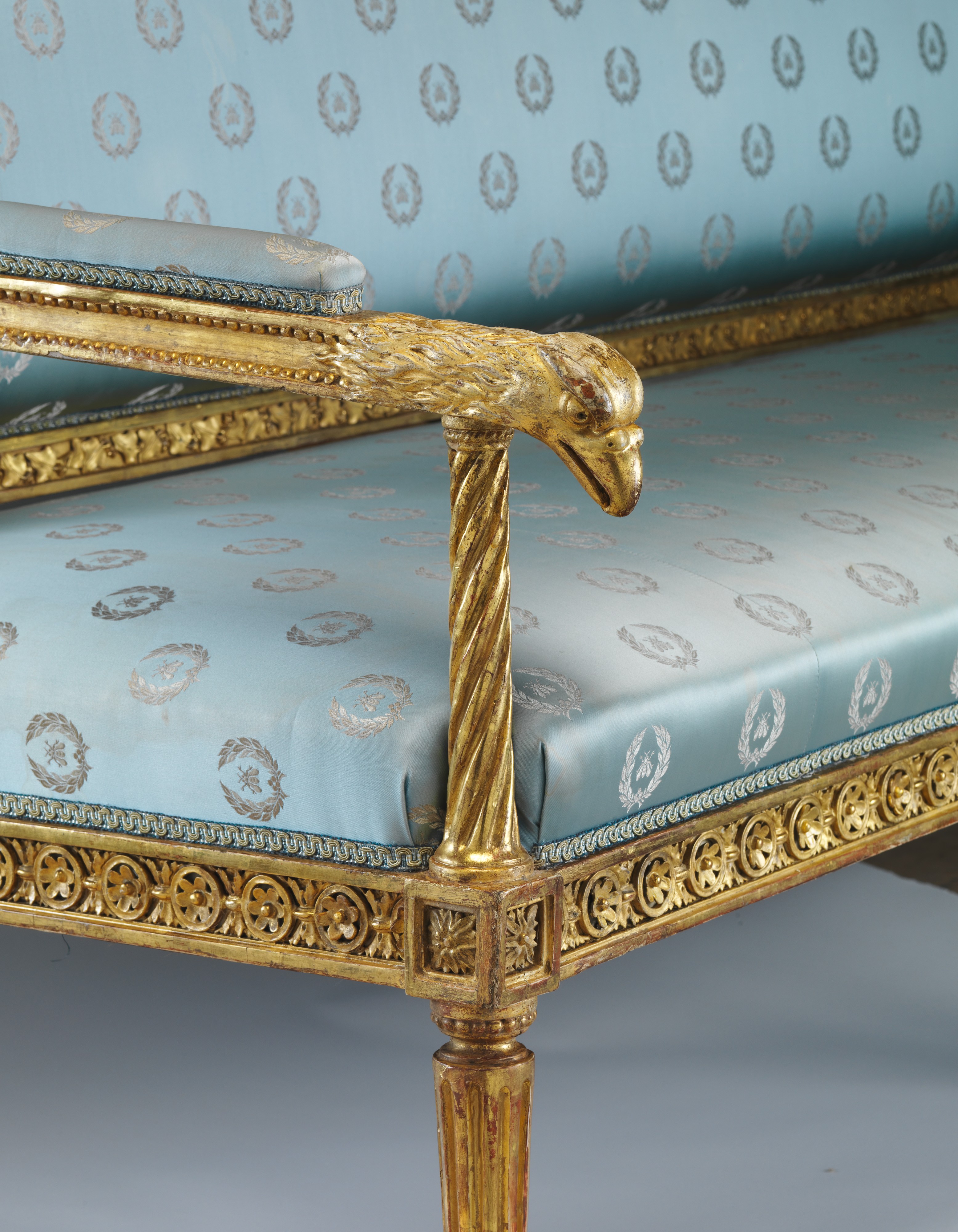Settee
Not on view
This settee is one of the most significant pieces of documented Imperial Russian furniture to appear in recent decades. A court order of 1799 stipulated that all objects in an Imperial dowry had to be "worthy" of a Russian grand duchess and reflect "the indigenous local splendor as an emblem of courtly life and stately prestige." In March 1803 Russia's foremost designer and architect , Andrei Voronikhin, set a time frame of three months for the court artisans to create a genuinely Russian bedroom suite for the sister of Tsar Alexander I, Grand Duchess Maria Pavlovna, who was to marry hereditary prince Carl Friedrich of Sachsen-Weimar-Eisenach in 1804. To meet the challenge innovative techniques such as prefabricated carvings were applied, yet typically Russian features like the dual-tone matte finish and polished gilding were not sacrificed. The carved armrests on the settee represent the double-headed eagle of the Romanov arms. After her wedding the highly sophisticated Maria Pavlovna moved to Weimar, where she cultivated a weekly salon that included the poets Goethe and Schiller. Her ostentatious suite—two settees (the other is still in Weimar), a richly carved canopy bed, a fire screen, eight armchairs, two tabourets, and other pieces—was installed in the Weimar Palace. Documents and illustrations from December 1804 reveal that a sky-blue silk velvet was used for the upholstery.
Due to rights restrictions, this image cannot be enlarged, viewed at full screen, or downloaded.
This artwork is meant to be viewed from right to left. Scroll left to view more.
